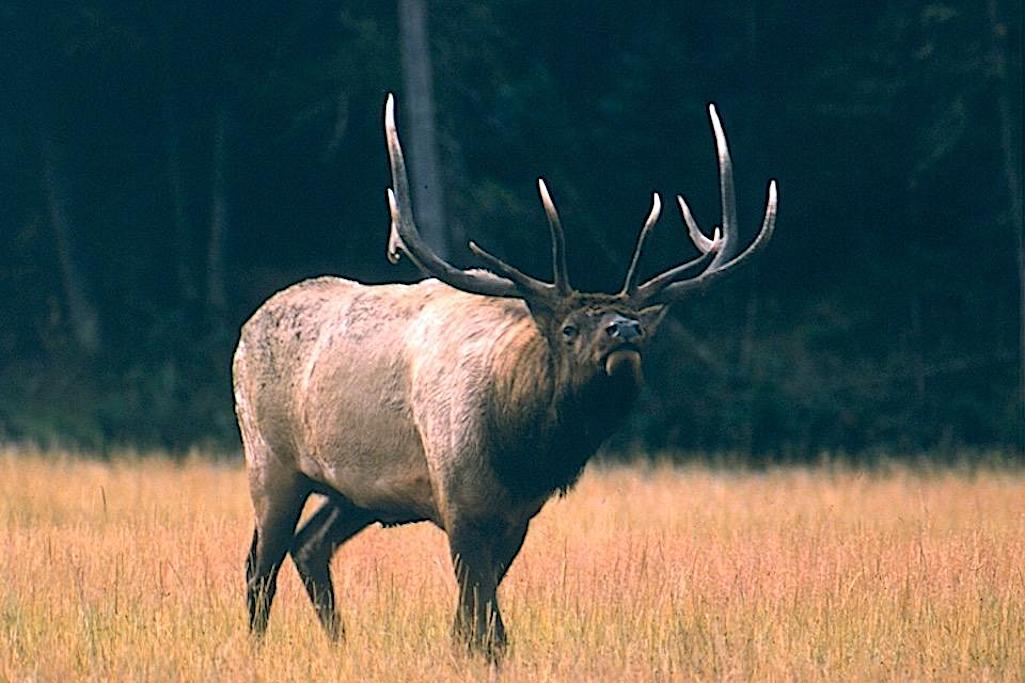
Worries that elk feedgrounds in northwestern Wyoming are spreaders of disease has led to a request that the state of Wyoming stop feeding elk/NPS file
Concerns that elk feedgrounds in northwestern Wyoming could contribute to the spread of chronic wasting disease and other infectious diseases through the Greater Yellowstone Ecosystem have led conservation groups to urge the state of Wyoming to stop feeding elk by 2028.
Chronic wasting disease, a wildlife disease that destroys the brains of deer, elk, and moose, was detected in elk at Grand Teton National Park late in 2020. That was the first elk to test positive for CWD in northwest Wyoming and in close proximity to elk feedgrounds, according to Grand Teton staff.
Other diseases can incubate and spread through the feedgrounds, including brucellosis, a disease that leads ungulates and domestic livestock to abort their fetuses. Other diseases associated with feedgrounds, according to research by Western Ecosystems Technology, include pasturellosis, bovine-associated diaarrhea, and scabies.
It's been accepted that elk, not bison, are the greatest spreader of brucellosis in northwestern Wyoming, Montana and Idaho.
Because of the threat posed by large congregations of elk at the feedgrounds, the Sierra Club, Gallatin Wildlife Association, Yellowstone to Uintas Connection, Jackson Hole Conservation Alliance, Wyoming Wildlife Advocates and Western Watersheds Project have asked the Wyoming Game and Fish Department to prioritize the health of the Greater Yellowstone region’s wild ungulate herds and begin phasing out 22 state-run feedgrounds where tens of thousands of elk are artificially fed each winter. The agency is poised to issue a draft feedground management plan early next year.
Wildlife managers have said that while the positive test in an elk raises concern, it does not come as a surprise based on the steady progression of the disease westward across the state and the positive result for a mule deer in Grand Teton National Park in the fall of 2018. A mule deer also tested positive for CWD in Wyoming's Star Valley in 2016, the Pinedale area in 2017, and two mule deer in the Wyoming Range in 2020.
Intensive CWD surveillance of the Jackson elk herd has been ongoing since 2009. More than 4,500 CWD samples have been collected and tested for the entire Jackson elk herd, with more than 1,400 samples collected through the park's elk reduction program alone.
The recommendation to close the feedgrounds asks the Wyoming Game and Fish Department to begin a controlled phase out of artificial feeding in the winter of 2023-2024, and for all state-run feedgrounds to be phased out by 2028. It also calls for the plan’s explicit recognition of the important role that native carnivores play in reducing the spread of chronic wasting disease and brucellosis, for protection of existing elk migration corridors, and for strategies to restore migratory behavior where natural animal movements have been disrupted by artificial feeding.
“Wyoming is the only state in the western U.S. that continues the unjustifiable practice of widespread artificial feeding of elk, despite Wyoming’s many similarities with other intermountain states” said Kaycee Prevedel of Sierra Club Wyoming. “If a state such as Colorado – virtually the same size as Wyoming with considerably less public land and many more people – can manage to sustain 2.6 times more wild elk than Wyoming without resorting to winter feeding, Wyoming could do the same. At the very least, it is incumbent on Wyoming wildlife managers to investigate how our neighboring intermountain states manage to have robust wild elk numbers without resorting to artificial feeding.”
Erik Molvar of Western Watersheds Project added that, “[I]t is, quite literally, only a short matter of time before chronic wasting disease manifests as a full blown epidemic in elk herds that frequent feedgrounds. The faster the State of Wyoming can shut down the feedgrounds, the lower the risk of ‘superspreader’ events that infect the entire Yellowstone herd. When CWD reaches critical mass on the feedgrounds, these migratory herds will spread infectious prions far and wide."



Add comment